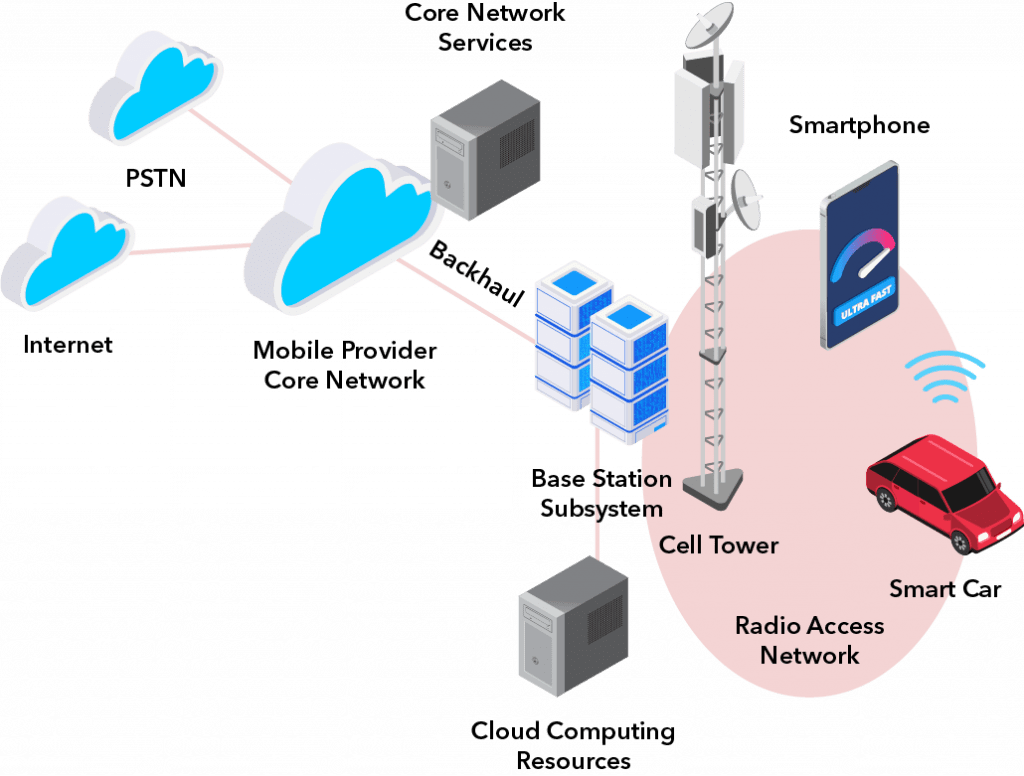5G Network Core Equipment
Automated vehicles, smart homes and factories, streaming video, and cloud computing have created a need for higher bandwidth and lower latency. 5G promises a 100 times speed boost compared to 4G LTE. 5G also needs to connect one million devices per square kilometer.
A new frequency band is required plus improved radio access network (RAN) architecture. Carriers have started to develop open-source solutions with interchangeable COTS Arm or x86 servers with open-source software technologies.
5G spans the spectrum from 6 GHz to 300 GHz. 5G network architecture includes a radio unit (RU), distributed unit (DU), and a centralized unit (CU). This architecture could be co-located or deployed in separate locations.
The radio unit consists of an RF transmitter and an LO PHY block. The distributed unit manages radio packet traffic to and from the radio unit. The distributed unit components include a radio link controller (RLC), the media access controller (MAC), and the HI PHY. The centralized unit contains a control plane (CP) and a user plane (UP). A RAN Intelligent Controller (RIC) functions as a virtualized radio network.
Multi-Access Edge Computing (MEC) is also involved in 5G architecture. It brings applications from centralized data centers to the network edge, closer to users and devices.
Network function virtualization (NFV) eliminates the need for hardware elements and decreases installation times.
5G implementation is based on:
- Cloud-native applications
- REST services-based integration
- Virtualized network functions
- Network and IT software
- Stateless network functions
- Decoupled storage
- Microservices
- DevOps, CI/CD methodologies
- Slice-based network approach
- Edge computing
- Advanced analytics
- Control and user planes separation
- Centralized and distributed processing
